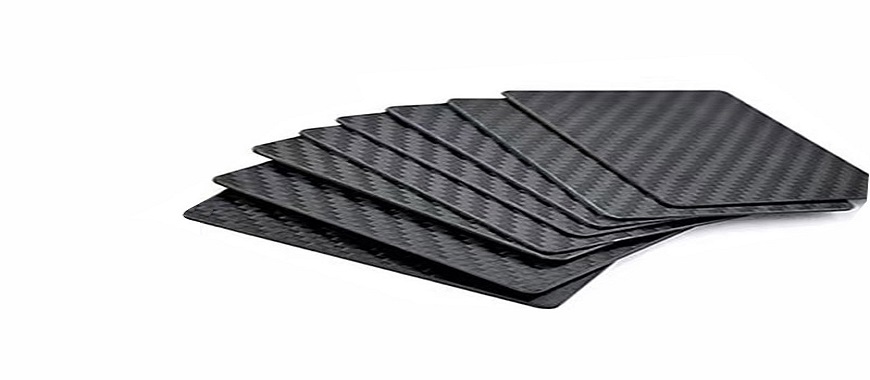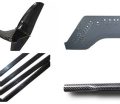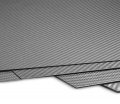
Carbon fiber strands are known for their exceptional strength-to-weight ratio, making them highly desirable in various industries. Composed of thin, strong crystalline filaments of carbon, these strands offer remarkable durability, flexibility, and resistance to corrosion. Unlike other fiber materials, carbon fiber strands combine lightweight properties with immense strength, making them suitable for high-performance applications. Industries such as aerospace, automotive, and sporting goods rely on carbon fiber strands to enhance product strength without adding unnecessary weight. Additionally, carbon fiber strands are widely used in construction, providing a strong yet lightweight reinforcement option for concrete and other materials. Their unique properties continue to drive innovation across diverse fields, cementing their role in modern engineering and manufacturing solutions.
What Is Carbon Fiber Strands
Carbon fiber strands are made from thousands of thin, durable carbon filaments bound together to create a high-performance material used across various industries. Known for their impressive strength-to-weight ratio, carbon fiber strands are both strong and lightweight, making them an ideal choice for applications where durability and weight reduction are crucial. From aerospace to automotive manufacturing, carbon fiber strands enhance product performance and longevity, allowing manufacturers to create durable yet lightweight components.
The Key Benefits of Carbon Fiber Strands in Industry
The benefits of carbon fiber strands stem from their unique properties. With high tensile strength, they can handle substantial stress without deforming, making them suitable for applications requiring structural integrity. Additionally, carbon fiber strands have excellent thermal stability, allowing them to perform effectively across a wide range of temperatures. Their resistance to corrosion means they are also ideal for use in harsh environments, where exposure to moisture, chemicals, or UV light would degrade other materials. These properties give carbon fiber strands a wide array of uses across industries, particularly in fields that demand long-lasting, resilient materials.
Applications of Carbon Fiber Strands in Aerospace and Automotive Fields
Aerospace and automotive manufacturers rely heavily on carbon fiber strands due to their ability to reduce weight while providing high durability. In the aerospace industry, carbon fiber strands are used to create lightweight components for aircraft, which improves fuel efficiency and overall performance. Similarly, in automotive manufacturing, carbon fiber strands are used in various parts, including body panels and structural supports, helping to enhance vehicle handling and efficiency. By integrating carbon fiber strands, both industries are able to create products that meet rigorous performance standards while minimizing weight.
Why Carbon Fiber Strands Are Essential in Construction
Construction is another industry that benefits significantly from the use of carbon fiber strands. Their high strength and resistance to environmental factors make them an excellent choice for reinforcing concrete, steel structures, and other materials used in large-scale infrastructure. Carbon fiber strands are also used in retrofitting existing structures, especially in areas prone to seismic activity. By reinforcing buildings and bridges with carbon fiber strands, engineers can increase the durability and safety of these structures. GangLong Fiberglass offers a range of products designed to support these demanding construction applications.
The Role of Carbon Fiber Strands in Sporting Goods
In the sporting goods industry, carbon fiber strands play a crucial role in enhancing the performance of equipment. Due to their strength and lightweight properties, they are commonly found in high-performance sports gear, such as golf clubs, tennis rackets, and bicycles. Carbon fiber strands enable athletes to use equipment that is not only durable but also easy to handle, providing a competitive edge. GangLong Fiberglass supplies carbon fiber strand-based products that are optimized for sporting applications, allowing athletes to benefit from the advanced properties of this material.
The Key of Carbon Fiber Strands
Carbon fiber strands are essential components in creating high-strength, lightweight materials for various applications. These strands consist of ultra-thin fibers, which are tightly woven or layered to form larger, durable structures. At GangLong Fiberglass, our carbon fiber strands are produced with precise control over the diameter and alignment of each strand, allowing for superior strength, flexibility, and resistance to wear. Understanding the properties and applications of carbon fiber strands offers valuable insight into why they are increasingly chosen for industries ranging from aerospace to sporting goods.
What Are Carbon Fiber Strands Made Of?
Carbon fiber strands are composed of carbon atoms bonded together at a microscopic level, forming long, thin filaments. Each carbon atom in the strand bonds with other atoms, creating a stable structure that contributes to the material’s overall strength and resilience. This structure is what gives carbon fiber strands their renowned durability. GangLong Fiberglass carefully processes these strands to achieve uniformity and strength, ensuring that each strand can withstand various stresses without deforming. This consistency in production is essential in applications where even slight weaknesses could lead to failure.
Properties of Carbon Fiber Strands
Carbon fiber strands have a unique set of properties that make them suitable for demanding applications. Their combination of strength, lightweight nature, and resistance to corrosion and high temperatures sets them apart from other materials.
- High Tensile Strength: One of the defining characteristics of carbon fiber strands is their high tensile strength. This property allows them to bear significant loads without breaking or deforming. In applications such as aircraft components and sporting goods, tensile strength is crucial for performance and safety. GangLong Fiberglass ensures that each carbon fiber strand meets strict tensile requirements to perform reliably in high-stress conditions.
- Lightweight Composition: Carbon fiber strands are exceptionally lightweight, making them ideal for products where reducing weight is a priority. In industries like automotive and aerospace, where minimizing weight can enhance fuel efficiency and performance, carbon fiber strands offer an unmatched advantage. At GangLong Fiberglass, we focus on producing strands that balance lightweight features with optimal strength, providing solutions that contribute to both efficiency and durability.
- Thermal Resistance: Carbon fiber strands can endure high temperatures without losing structural integrity. This property is especially beneficial in applications involving exposure to extreme heat, such as in engines or industrial equipment. GangLong Fiberglass produces carbon fiber strands that maintain their strength even under high-temperature conditions, ensuring they are suitable for various challenging environments.
- Corrosion Resistance: Unlike metals, carbon fiber strands resist corrosion, making them well-suited for environments with exposure to moisture or chemicals. This resistance to corrosion helps extend the life of products made with carbon fiber strands, providing a cost-effective alternative to materials that may deteriorate over time.
Carbon Fiber Strands in Aerospace and Automotive Industries
The aerospace and automotive sectors have increasingly adopted carbon fiber strands due to their lightweight, high-strength properties. In aerospace, reducing weight is critical for fuel efficiency and load management. Carbon fiber strands help achieve this goal by offering a lightweight alternative to metals without compromising structural strength. Components such as wing parts, fuselage reinforcements, and interior fixtures often incorporate carbon fiber strands.
In the automotive industry, carbon fiber strands are used in body panels, frames, and interior elements. At GangLong Fiberglass, we provide high-quality carbon fiber strands tailored to meet the demanding specifications of both industries, ensuring that our materials deliver exceptional performance under various conditions.
The Role of Carbon Fiber Strands in Sporting Goods
Carbon fiber strands play a vital role in the design of sporting equipment due to their balance of strength and lightness. From tennis rackets to bicycles, carbon fiber strands enhance the performance of sports equipment by allowing athletes to exert more control and power with less effort. GangLong Fiberglass produces carbon fiber strands that meet the requirements of sporting goods manufacturers, ensuring durability and consistent performance.
Carbon fiber strands are especially beneficial in sports like cycling, where every ounce counts in terms of speed and agility. By reducing the weight of bicycle frames and components, carbon fiber strands help athletes achieve greater speeds with less energy expenditure.
How About Carbon Fiber Strands in Marine Applications
In the marine industry, carbon fiber strands are used to manufacture boat parts, masts, and other components that require both strength and resistance to water. Carbon fiber strands offer a lightweight alternative to traditional materials, helping to improve the efficiency and longevity of marine equipment. GangLong Fiberglass supplies carbon fiber strands specifically designed to withstand the unique challenges of marine environments, including exposure to saltwater and humidity.
The corrosion resistance of carbon fiber strands makes them an ideal choice for boats and yachts, where materials must endure constant contact with water. This property helps reduce maintenance costs and prolongs the lifespan of marine vessels, making carbon fiber strands a cost-effective solution for marine applications.
The Unique Benefits of Carbon Fiber Strands in Construction
Carbon fiber strands are also gaining traction in the construction industry, where they are used to reinforce concrete and other building materials. Their high tensile strength makes them an effective reinforcement for concrete structures, adding durability without adding significant weight. At GangLong Fiberglass, we provide carbon fiber strands that enhance the strength and flexibility of construction materials, making them suitable for high-rise buildings, bridges, and other infrastructure projects.
In construction, carbon fiber strands contribute to the development of lightweight, resilient materials that can withstand heavy loads and environmental stress. Their use in construction reduces the need for bulky steel reinforcements, allowing for more innovative architectural designs.
High-quality carbon fiber for hood available online now
The Advantages of Carbon Fiber Cord
Carbon fiber cord is a specialized product made from carbon fiber strands, designed for applications where flexibility and durability are essential. Carbon fiber cord is often used in settings where traditional materials would not perform as effectively due to weight or strength limitations. At GangLong Fiberglass, we produce carbon fiber cord that leverages the unique properties of carbon fiber strands, offering strength, lightweight composition, and resilience.
- Durability: Carbon fiber cord is highly durable, capable of withstanding wear and tear in applications where frequent use is expected. This makes it a preferred choice for activities such as climbing or sailing, where strength and reliability are crucial.
- Lightweight Strength: Despite its strength, carbon fiber cord is lightweight, making it an excellent choice for situations where heavy cords would be cumbersome. It allows users to carry and utilize the cord without adding excessive weight, enhancing convenience and functionality.
- Resistance to Environmental Factors: Carbon fiber cord resists moisture, UV radiation, and temperature fluctuations, making it suitable for outdoor applications. Its resilience against environmental elements ensures a longer lifespan, reducing the need for frequent replacements.
Carbon Fiber Strands for Digital and Industrial Design
Carbon fiber strands have also found their way into the digital design realm, where they are used to create visual representations of high-tech, modern aesthetics. In digital designs, carbon fiber strands appear as textures and patterns, often in backgrounds or branding elements. These digital representations capture the sleek, futuristic look of actual carbon fiber strands, making them a popular choice in graphics and web design.
For industrial designers, carbon fiber strands offer a practical solution for creating durable yet lightweight components. Products designed with carbon fiber strands bring a sense of modernity and sophistication, appealing to consumers looking for quality and performance. GangLong Fiberglass works closely with designers to provide carbon fiber strands that enhance the functionality and aesthetics of industrial products.
How About Choosing Carbon Fiber Strands for Sustainability
Carbon fiber strands offer sustainable benefits by reducing the need for heavy, non-renewable materials. Their lightweight nature contributes to energy efficiency, especially in applications like transportation, where fuel consumption can be minimized with lighter materials. Additionally, the durability of carbon fiber strands means that products last longer, resulting in less waste over time. At GangLong Fiberglass, we are committed to producing carbon fiber strands that align with sustainability goals, offering environmentally friendly solutions without compromising performance.
Lightweight and Durable Carbon Fibre Welding Hood Explained
Key Uses of Carbon Fiber Strands in Medical Equipment
The medical industry utilizes carbon fiber strands in the production of equipment that requires both strength and lightweight composition. From imaging tables to surgical tools, carbon fiber strands are integrated into medical devices to improve maneuverability and comfort for patients. The non-magnetic and radiolucent properties of carbon fiber strands make them particularly suitable for imaging devices like X-ray and MRI tables, where metal components could interfere with imaging quality.
GangLong Fiberglass provides carbon fiber strands that meet the stringent requirements of medical applications, ensuring that each strand is consistent and reliable for critical uses. By incorporating carbon fiber strands into medical equipment, manufacturers can enhance the efficiency and safety of medical procedures.
Exploring Future Innovations with Carbon Fiber Strands
The potential for carbon fiber strands is vast, and ongoing research continues to uncover new applications and methods of production. From renewable energy solutions to wearable technology, carbon fiber strands are poised to play an essential role in various emerging industries. GangLong Fiberglass remains dedicated to advancing carbon fiber technology, collaborating with partners to develop innovative products that leverage the unique properties of carbon fiber strands. As industries evolve, carbon fiber strands will continue to be a material of choice for their versatility, strength, and sustainability.
Enhance your ride with carbon fiber Cobalt SS
FAQs about Carbon Fiber Strands
A carbon fiber weave is a pattern created by interlacing carbon fiber strands or bundles to form a sheet or fabric. The weave pattern affects the material’s flexibility, strength, and appearance. Some common carbon fiber weave patterns include plain weave, twill weave, and harness satin. Plain weave offers a balanced look and stability, while twill weave provides a more flexible yet robust structure with a distinct diagonal pattern. Weaves are chosen based on both aesthetic preferences and functional requirements, making them versatile for various applications.
A single carbon fiber strand, or filament, is incredibly thin—often measuring only about 5-10 microns in diameter (for reference, a human hair is approximately 70 microns in diameter). Despite its thinness, the strength of each strand is remarkable due to the crystalline structure of the carbon atoms. These strands are then bundled to create thicker “tows,” with varying levels of strength and flexibility depending on the number of filaments in each tow. This structure allows carbon fiber materials to be tailored for applications requiring specific strength-to-weight ratios.
Carbon fiber strands are made of carbon atoms, typically derived from a precursor material called polyacrylonitrile (PAN). The process of manufacturing carbon fiber involves heating PAN fibers at high temperatures in an oxygen-free environment, causing the atoms to align in parallel crystals along the fiber’s length. This alignment gives carbon fiber its strength and lightweight properties, making it a preferred material in industries like aerospace, automotive, and sports equipment. Some carbon fibers may also be made from pitch or rayon, though PAN-based fibers are the most common due to their strength and cost-effectiveness.

As the editor of GangLong Fiberglass, I have years of experience and in-depth research, focusing on cable tray products, fiberglass solutions, and grille systems. I incorporate years of industry insights and practical experience into every content, committed to promoting the progress of the industry. At GangLong Fiberglass, my commitment is reflected in every product, from innovative cable trays to durable fiberglass solutions and sturdy grille systems. As an authoritative voice in the industry, my goal is to provide valuable information to professionals and businesses and promote forward-looking solutions.


